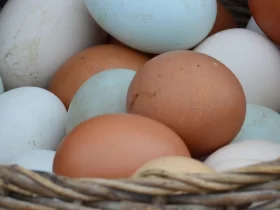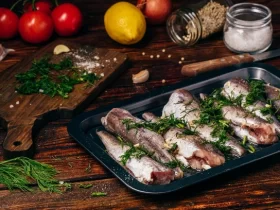Master the Art of Cooking Beans in a Rice Cooker
Are you a fan of beans but struggle with the lengthy cooking process? Look no further! With a rice cooker, you can easily prepare delicious and nutritious beans without the hassle. In this article, we will guide you through the step-by-step process of cooking beans in a rice cooker, enabling you to enjoy perfectly cooked beans every time.
Step 1: Selecting Your Beans
The first step in cooking beans in a rice cooker is to choose the right type of beans for your recipe. Whether you prefer kidney beans, black beans, chickpeas, or any other variety, ensure that they are fresh and free from any foreign particles. Rinse the beans thoroughly under running water to remove any dirt or debris.
Step 2: Soaking the Beans
Soaking the beans before cooking helps to soften them, reduce the cooking time, and improve their digestibility. While some rice cookers allow you to skip this step, soaking the beans is highly recommended. Simply place the beans in a large bowl and cover them with water. Allow them to soak overnight or for at least 6-8 hours.
Step 3: Preparing Your Rice Cooker
Ensure that your rice cooker is clean and in good working condition. Measure the desired quantity of beans based on your recipe and add them to the rice cooker. For every cup of beans, add about 2.5 cups of water. Adjust the water quantity based on your preferred consistency and the type of beans you are using. You can also add any desired seasonings or spices at this stage to enhance the flavor of the beans.
Step 4: Cooking the Beans
Place the lid on the rice cooker and set it to the “Cook” or “Regular” setting. Depending on the type of beans, the cooking time may vary between 1 to 2 hours. Keep an eye on the rice cooker and occasionally check the beans for tenderness. Once cooked, the beans should be soft and easily mashed between your fingers.
Step 5: Letting the Beans Rest
After the beans have reached the desired consistency, switch off the rice cooker and let the beans rest for 10-15 minutes. This allows them to absorb any remaining liquid and enhance the flavors. You can also give them a gentle stir to distribute the flavors evenly.
Step 6: Serving and Storing
Your delectable beans are now ready to be served! Serve them as a side dish, add them to soups, stews, or salads, or use them as a filling for tacos or burritos. Any leftover beans can be stored in an airtight container in the refrigerator for up to three days. Enjoy them cold or gently reheat them before serving.
Conclusion
Now that you know how to cook beans in a rice cooker, you can easily incorporate this versatile and nutritious ingredient into your daily meals. The rice cooker simplifies the process, allowing you to enjoy tender and flavorful beans without the need for constant tending. Experiment with different types of beans and seasonings to create a variety of delicious dishes. So go ahead and make the most of your rice cooker by adding beans to your culinary repertoire!
Explore More Recipes and Ways to Use Your Rice Cooker
After mastering the art of cooking beans in a rice cooker, it’s time to broaden your culinary horizons with a variety of delicious recipes. From hearty mains to light sides, these dishes utilize your new skills in diverse and flavorful ways. For a comforting meal, try the hearty black bean chili, perfect for chilly evenings. If you’re aiming for something classic, the classic red beans and rice offers a satisfying dish with minimal effort. For those who enjoy international flavors, the flavorful chickpea curry is a must, bringing aromatic spices and rich textures to your table. Each recipe is designed to be straightforward and delicious, utilizing the rice cooker to minimize kitchen hassle and maximize taste.
-
Can I cook different types of beans in a rice cooker?
Yes, you can cook different types of beans in a rice cooker. Rice cookers are versatile appliances that are not limited to cooking rice alone. They can easily handle different types of beans, including black beans, pinto beans, kidney beans, chickpeas, and more.
-
Do I need to pre-soak the beans before cooking them in a rice cooker?
It is recommended to pre-soak most beans before cooking them in a rice cooker. Pre-soaking helps to soften the beans, reduce cooking time, and make them easier to digest. However, some smaller beans like lentils or split peas can be cooked without pre-soaking.
-
How long does it take to cook beans in a rice cooker?
The cooking time for beans in a rice cooker can vary depending on the type of beans and the desired tenderness. Generally, it takes around 1 to 2 hours to fully cook beans in a rice cooker. Pre-soaked beans tend to cook quicker than unsoaked ones.
-
Can I add seasonings or spices to the beans while cooking them in a rice cooker?
Absolutely! Adding seasonings and spices can enhance the flavor of the beans. You can add ingredients like garlic, onion, bay leaves, cumin, paprika, or any other spices and herbs to flavor the beans while they cook in the rice cooker. Experiment with different combinations to find your favorite taste.
-
Can I cook beans together with rice in a rice cooker?
Yes, you can cook beans and rice together in a rice cooker. It’s a convenient way to prepare a complete meal. Just make sure to adjust the water ratio accordingly, as beans require more liquid to cook than rice. Also, keep in mind that the cooking time may be longer when cooking beans and rice together.
-
Can I freeze the cooked beans for later use?
Absolutely! Cooked beans can be frozen for later use. Allow the cooked beans to cool down completely before transferring them to airtight freezer-safe containers or freezer bags. Label and date the containers, and they can be stored in the freezer for up to 3 months. Thaw the beans in the refrigerator before reheating or adding them to dishes.
-
How can I ensure that the beans are fully cooked in a rice cooker?
To ensure that the beans are fully cooked in a rice cooker, you can perform a taste and texture test. Take a few beans and check if they are tender and soft enough to your liking. If they are still firm or have a bite to them, continue cooking for a little longer until they reach the desired consistency.










Leave a Reply